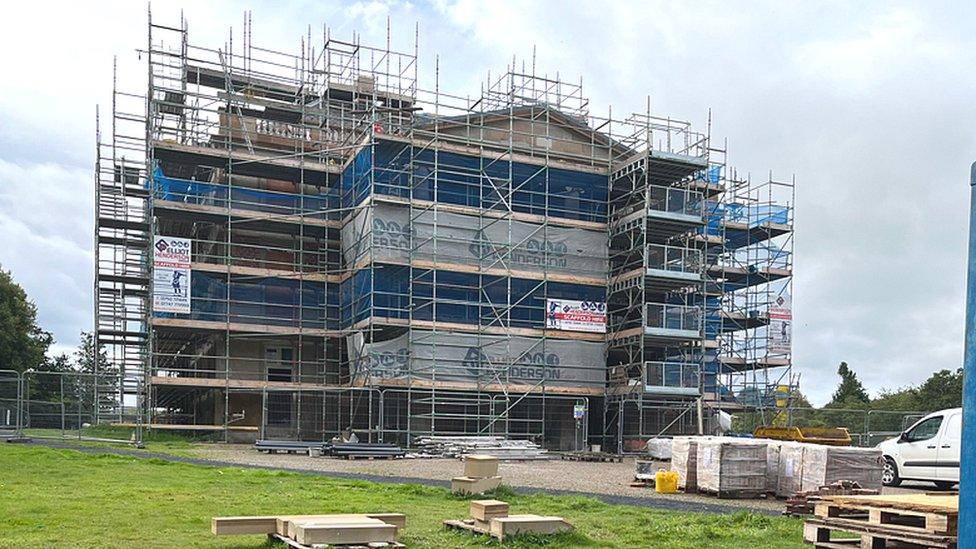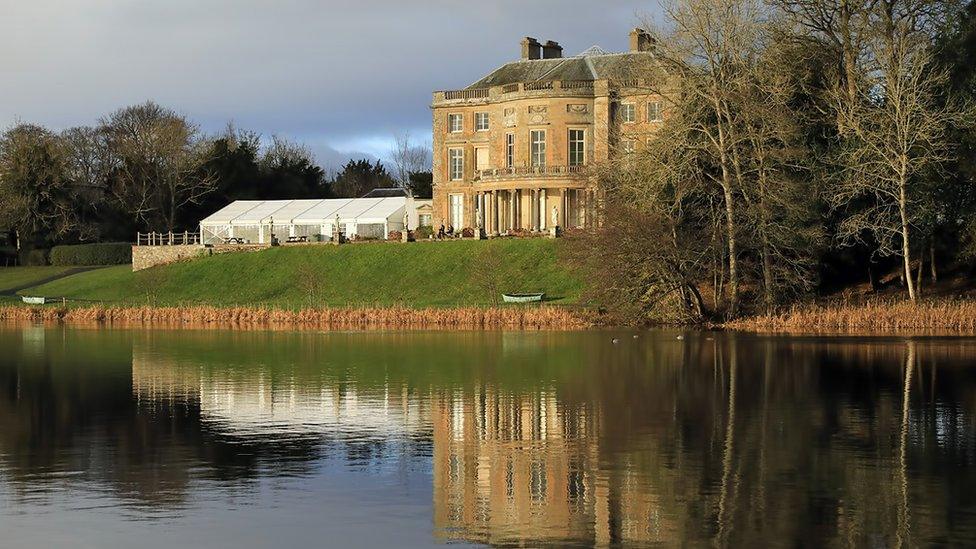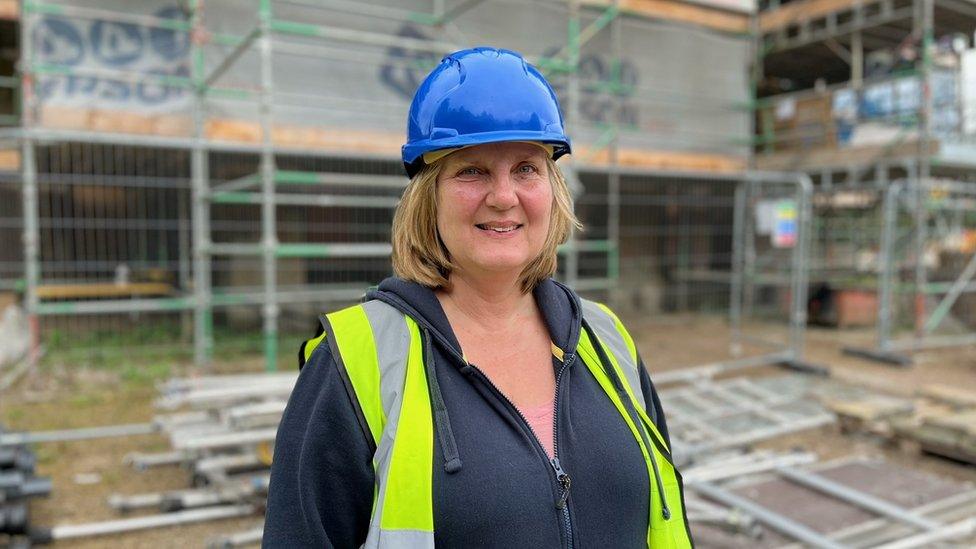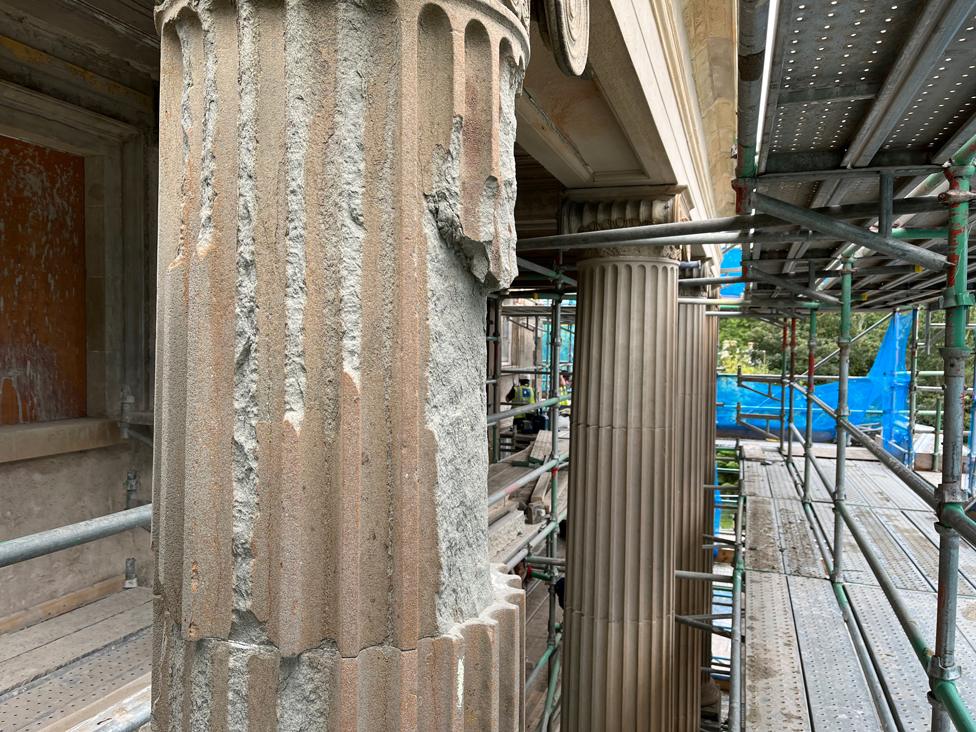Community-owned mansion near Selkirk saved from collapse
- Published

Surveys this year revealed parts of the building were about to collapse
A community-owned mansion house near Selkirk has been saved from collapse.
During the Covid pandemic extensive dry rot was discovered inside the historic Haining House.
Subsequent structural surveys of the exterior, carried out earlier this year, revealed parts of the 230-year-old building were about to collapse.
Building conservationist Craig Rae said: "I wouldn't have given it any more than three years before walls would have come down."
The renovation plans for the building had to be accelerated - but now the repair work should be completed by the end of this year.
The Haining House was bequeathed to a charitable trust in 2009 by the late Andrew Nimmo-Smith.
Along with its picturesque 65-hectare estate, the retired lawyer's wish was for the house to benefit the people of Selkirkshire and beyond.
Over the past decade new pathways have been created around the estate's loch, with about 300 walkers, cyclists, joggers and canoeists using the estate every day.

Andrew Nimmo-Smith left the property to the community to become a visitor attraction
Flats and cottages on the 12th Century estate have been renovated, and artists' studios created within a courtyard, to generate regular income.
Weddings, concerts and exhibitions have been regularly held at the house as the Haining Charitable Trust (HCT) began raising funds for the refurbishment of the 230-year-old mansion.
It was during initial surveys in 2020, ahead of the phased renovations, that dry rot was first discovered on the Category A listed building's west wing.
Deeper inspections found the rot had spread throughout almost the entire building.
Michelle Ballantyne, who chairs the HCT, said: "Work was about to start on the main house, but the more we stripped back the walls, the worse it got.
"All of the joists were rotten, the floors and ceilings had separated from the walls, and the interior of the house was on the verge of collapse."

Former MSP Michelle Ballantyne leads the community trust looking after the building
She added: "The entire west wing had to be almost taken down, with every bit of wood from the main house also removed - that's windows, sills, doors, hangers and walls frames.
"We had to change our plans from a gradual restoration over a number of years to do the whole house in one go."
As the inside of the Palladian mansion was finally stripped back to a shell earlier this year, stonemasons and roofers arrived on site to begin exterior renovations.
As they began peeling back render and looking behind architectural features, they discovered even more problems.

Craig Rae believes Haining House was only a few years away from collapse
Building conservationist Craig Rae from contractors LTM said: "The original plan was to take off the damaged cladding and keep what we could, but as we stripped back we found the building was starting to collapse.
"We had to go back to planners and architects to re-evaluate how we could save the building.
"The back of the building was particularly bad - we were really lucky to have caught it when we did, otherwise... well I dread to think what could have happened."
What was initially planned as a phased works programme has now become a single £3.7m renovation.
More than £2.2m - from funders including South of Scotland Enterprise, Historic Environment Scotland, the Architectural Heritage Fund and Scottish Borders Council - has already been raised with live applications awaiting decision from other bodies.
A public appeal for help is also being launched this month.

Damage to the original stone columns is still evident on the building
Ms Ballantyne added: "We are delighted with the partner support and confirmation of funding awards we have received so far.
"This will really help us to realise our plans for the Haining and restore a magnificent building and estate ensuring its long-term sustainability.
"But we have reached the stage where we will also need public support."
She said a public fundraiser was being planned to bring in "much-needed money" - and would also "show the funders we have approached that the public love this place and want to continue using it".
It is hoped that the exterior and most of the interior work will be completed by November, with a new annexe added by March.
The HCT hopes that, if enough funding is raised, the house will be open to the public from next summer.